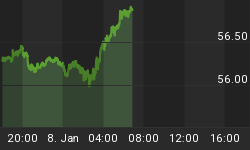Assuming the BLS projections for the labor force until 2020 are correct, what will the unemployment rate look like for the rest of the decade?
Background for this question comes from two prior posts.
- About That "Expected" Drop In Participation Rate
- Charting Errors in BLS Participation Rate Projections
Those posts show just how badly the BLS missed prior projections of the participation rate. Consider this chart of 2006 projections vs. 2012 projections from the second link above.
Chart Data
Mitra Toossi in November 2006: A new look at long-term labor force projections to 2050
Mitra Toossi in January 2012: Labor force projections to 2020: a more slowly growing workforce
I asked Doug Short at Advisor Perspectives to plot the difference as a follow-up to my post About That "Expected" Drop In Participation Rate.
Looking Ahead
Assuming labor force and participation rate projections made by Toossi in January 2012 are now correct, the determining factor is job growth.
Mike Klaczynski at Tableau Software took my idea of plotting BLS projections of the labor force and created the following interactive map that will project the unemployment rate at various levels of job creation.
Notes:
Projections from Mitra Toossi's January 2012 report Labor force projections to 2020: a more slowly growing workforce
- The chart assumes a steady rise in labor force to the BLS 2020 projection of 164,360. Actual results will not be that uniform.
- The labor force is a function of overall population and the participation rate.
- Specifically, the participation rate is the ratio of the civilian labor force to the total noninstitutionalized civilian population 16 years of age and over.
- As shown above, and at the projected labor force growth coupled with a nominal drop in participation rate to 62.5 from the current 63.6, it will take about 100,000 jobs a month between now and 2020 to roughly hold the unemployment rate steady.
- It will take about 120,000 jobs a month for the rest of the decade to get the unemployment rate under 6%.
I had the total noninstitutionalized civilian population and the participation rate displayed in the same graph, but the result did not look as nice.
If the participation rate drops further, accompanied by a drop in the labor force, it will take fewer workers to hold the unemployment rate steady.
If the participation rate rises, it will take additional jobs to hold the unemployment rate steady.
120,000 jobs a month may not seem like a lot, especially compared to the Clinton years. However, boomer retirements coupled with declining birthrates will make 120,000 jobs a month not so easy to come by, especially as the economy slides into another recession.
Indeed, I believe the economy is already in recession and some posted job gains will be revised lower.
Moreover, the potential for older workers seek work well past retirement age (not dropping out of the labor force as expected), will also put upward pressure on the unemployment rate in ways not yet visible.

















